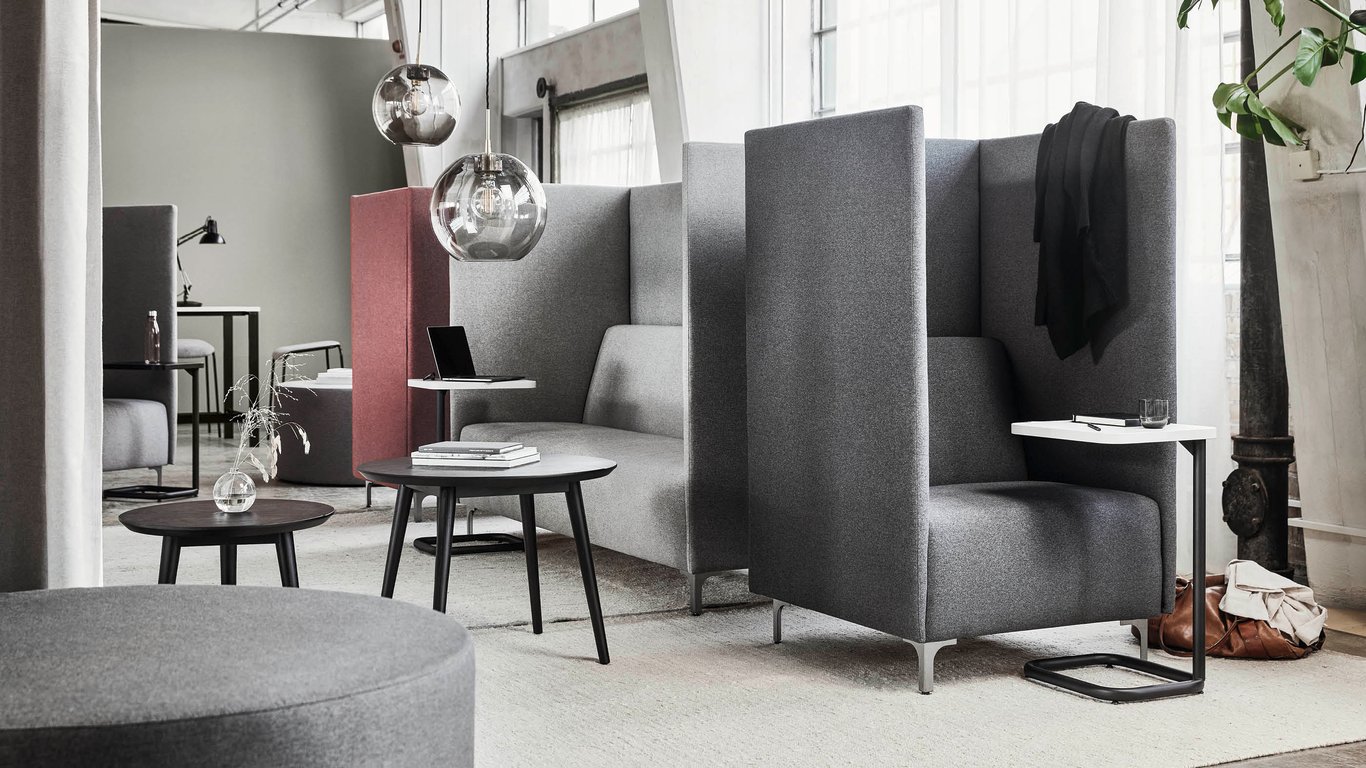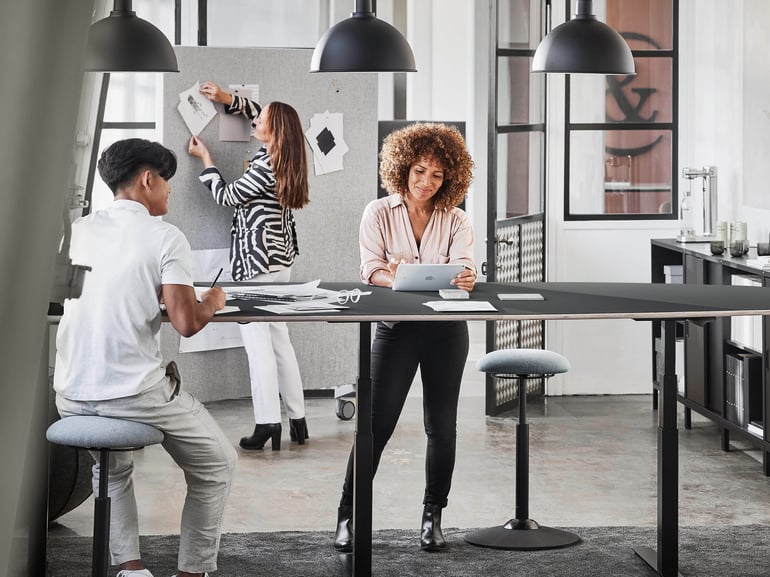- AJ Products IE
- Blog
- Tips & trends
- Five tips for a successful transition to the physical office
Five tips for a successful transition to the physical office
If you have been working remotely for a long time and you are returning to the physical office, it might be good to think about a few things that the company can do to make it a seamless transition, such as creating an inspiring and updated office environment. Here are some tips for a successful transition back to the office.
1. Book social activities in the calendar
Having a social activity as a standing event every week in your employees' calendar means that there is something fun to look forward to. It gives everyone a break, a chance to socialise, get reacquainted with their colleagues and create a sense of community. Having it planned in the calendar makes it a natural part of the work week.2. Upgrade the office with furniture that reflects the future of the office space
Getting back to the office with new needs can be a challenge. More conference rooms, a lounge area for creative meetings and updated office furniture are some of the ways to meet the new needs created by the changes in the way people expect to work now. If there is not enough open space, other solutions such as floor screens and high-sided armchairs can be used to create that environment instead.

3. Offer flexibility
A big change with returning to the office is that you do not have the same flexibility as you do with home working. One way to tackle that is by offering greater flexibility in working hours so your employees can better balance their work and personal life. For instance, giving two hours of flex time in the morning between 8am and 10am and two hours in the afternoon between 4pm and 6pm. This reduces stress on employees with personal commitments, such as childcare, without reducing the number of hours they actually spend at work.4. Evaluate continuously
Take the pulse of the workplace. Send out surveys to your employees to get a better idea of what they lack or appreciate in order to be able to adapt and meet new and existing needs. Ask about everything from wellbeing to office furniture and equipment to training that gives your employees security and opportunities for career development.5. Social etiquette and communication
Provide clear communication around expectations in the workplace and create social codes that are easy to follow. Whether it is about how and when to work undisturbed or how a meeting should be carried out, guidelines and structure are helpful and necessary for a pleasant work environment in the office.
Get the latest product launches and offers sent direct to your inbox
Do you want to recieve exclusive offers, information about new products and inspiration on how you can improve your workplace? Sign up for our free newsletter and be the first to receive our best offers!Please wait...
*By clicking subscribe, I confirm that I have read the privacy policy.

